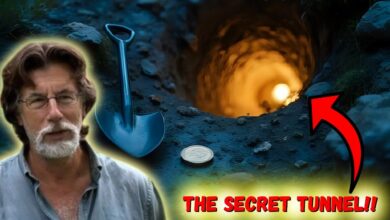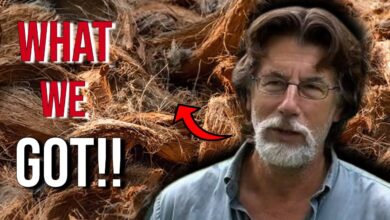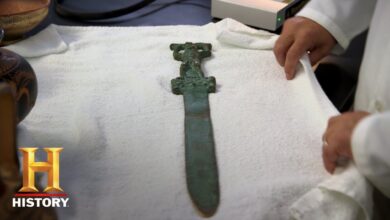The Curse of Oak Island: A Remarkable New Find at Smith’s Cove (Season 6) | History
The Curse of Oak Island: A Remarkable New Find at Smith's Cove (Season 6) | History

Get the pump started here and get it to work.
Looks like they might be already going.
NARRATOR: Alex Lagina joins his Uncle Rick at Smith’s Cove, where efforts to expose the newly discovered structure are well underway.
As we proceed to unearth the L-shaped structure, we’re hopeful that we’ll come to an understanding of what it represents, why it was put in place.
But we know nothing about it.
But right now…
What about the question of age?
I mean, is there anything other than, you know—
obviously, we can do a couple of things with it.
Yes.
I mean, is there any other way to figure out how old this thing is?
You know, this technique is unique.
You know, the use of—
perhaps that gives us…
You know, the lack of iron fasteners is—
It’s weird.
—it’s really weird.
Gary and I were talking about that.
They’d be all over it.
I would have thought—
So this— I mean, really, what you’re saying though is that this—
This is not— not—
- Oh, yeah.
- find anywhere else.
—something you’d—
Yeah, no.
Archaeologically, I don’t think anyone in Nova Scotia has seen—
No.
No.
Hold up.
Billy?
The timber right there.
You want to dig a little bit then?
There’s another beam right there.
Right here?
That’s odd.
- There’s another piece.
- There is another piece?
Yeah.
NARRATOR: Have Rick and the team just found another possibly man-made formation buried beneath Smith’s Cove?
Look at all of those.
This is quite different from what we’ve encountered down here.
This could be the hidden wharf.
NARRATOR: In 1936, treasure hunter Gilbert Hedden constructed a wharf at Smith’s Cove in anticipation of a massive excavation that would soon begin at the Money Pit.
Because the causeway to the mainland had not yet been built, Hedden needed a place for boats to safely dock and offload their cargo.
While working at low tide, Hedden and his team were shocked to discover two large timbers protruding from the rock, held together by large wooden pegs.
Upon closer inspection, he also noticed what appeared to be markings on the logs, leading Hedden to conclude the structure had once been used as an ancient boat slip.
Unfortunately, because Hedden lacked the resources to dig below the tide mark, he was forced to abandon his investigation.
As a result, the so-called slipway hasn’t been fully explored.
Look at that thing.
It’s huge.
Oh, yeah.
That’s quite intriguing.
There’s a break right here, and then it picks up again.
That seems deliberate.
When Hedden put his hand on it, he obviously found—
He did.
His wharf on top of—
Historically, Hedden—
That’s what he found.
And this is where?
Yes.
But he never sought to determine what he was building.
So are we standing on his construction?
Something he built?
From that perspective, we know very little.
Yeah.
Again, because there’s no fasteners associated with the horizontal beams of the slipway.
And it’s the same thing with the U-shaped structure.
No metal fasteners.
The slipway at this point becomes an area of significant interest.
But this is kind of where the L-shaped structure should continue to—
So aren’t we at least on track to intercept it?
Again, we don’t know where it comes in.
I mean, I would say we probably should call the experts and see if we can’t get this right to the point where this goes, and as this goes, see if we intercept the L-shaped structure.
You know, if this is at the same elevation as the U-shaped structure, wouldn’t that imply they were built contemporaneously?
It would certainly be a strong argument for that.
But they’re both on the same horizontal plane.
That, to me, implies the same time frame as well.
So then all we’re left with is when was that built?
This structure is huge.
It’s well-built, with large dimensions and surely meant for a specific purpose.
What that purpose is, we don’t yet understand.








